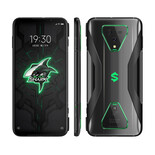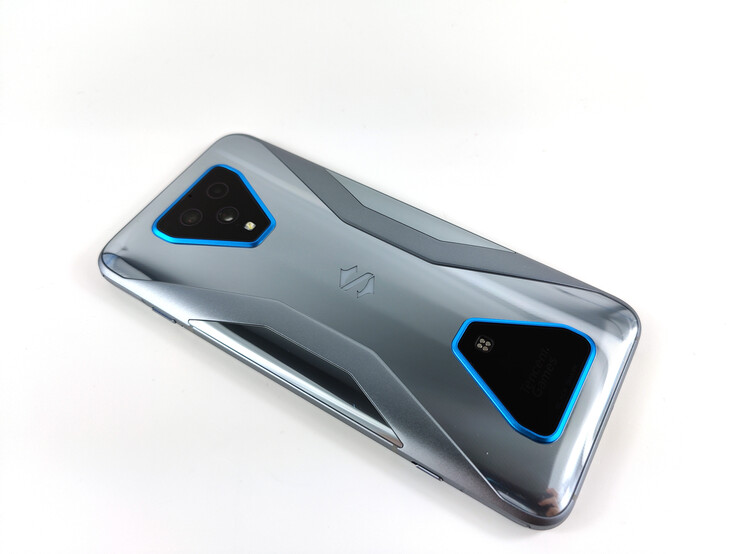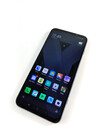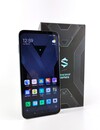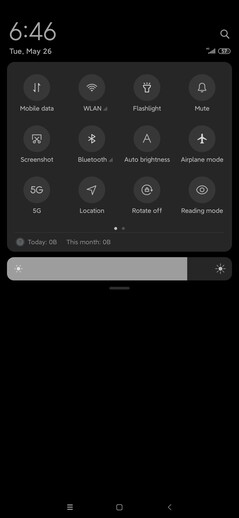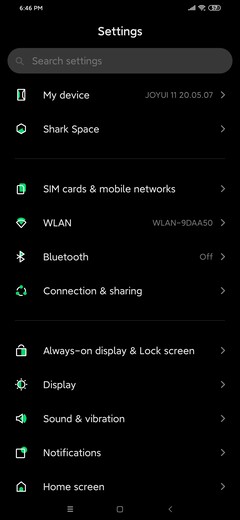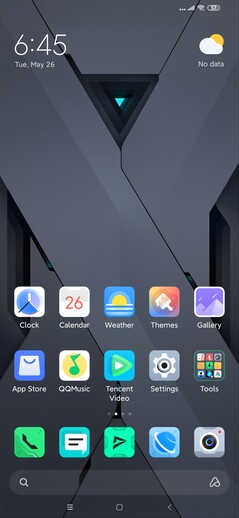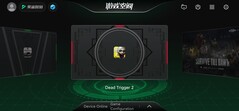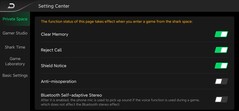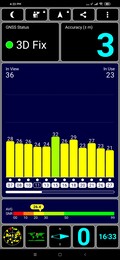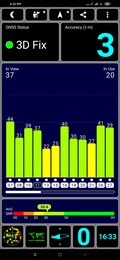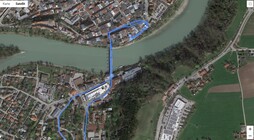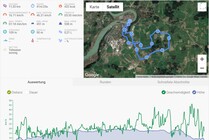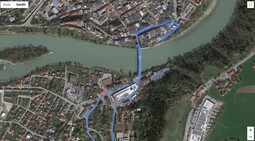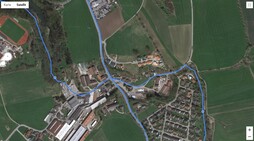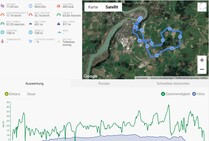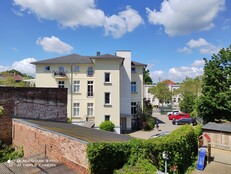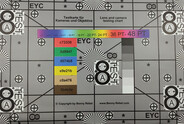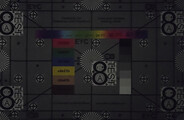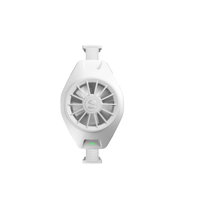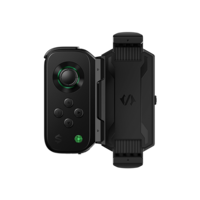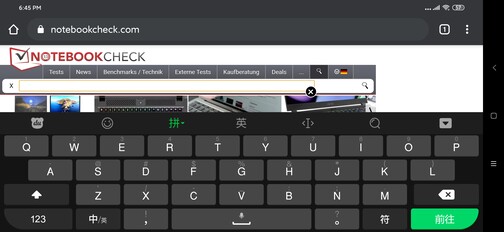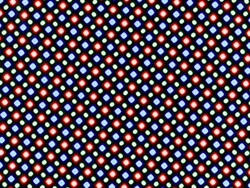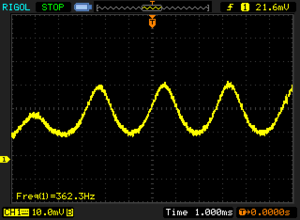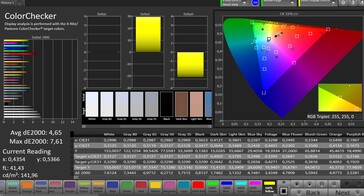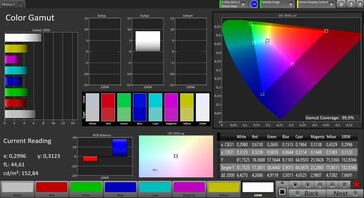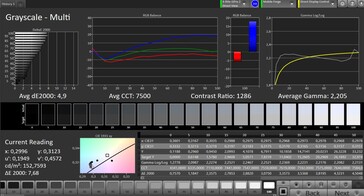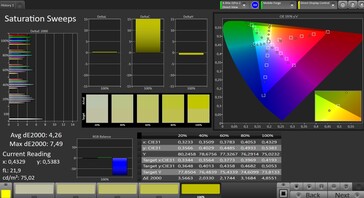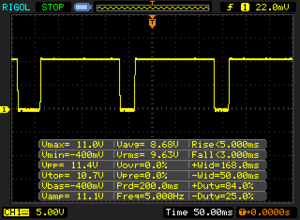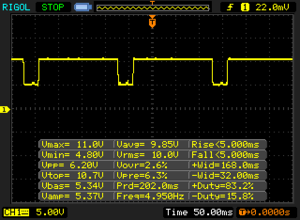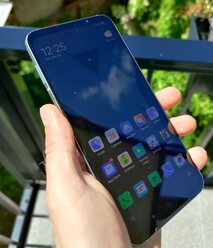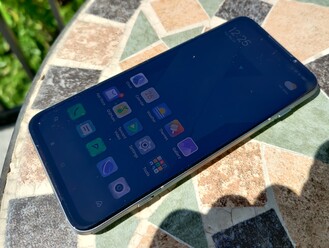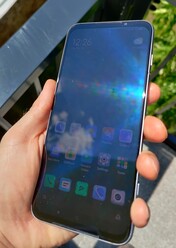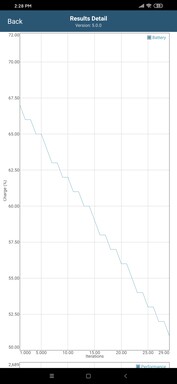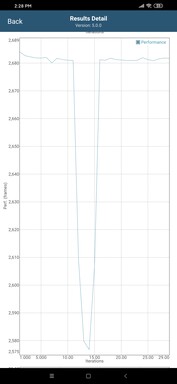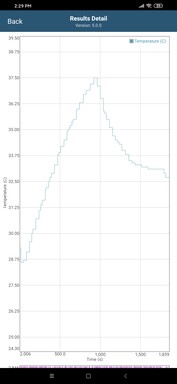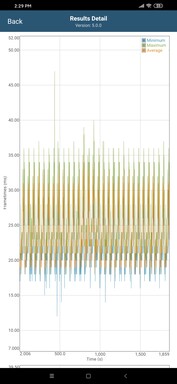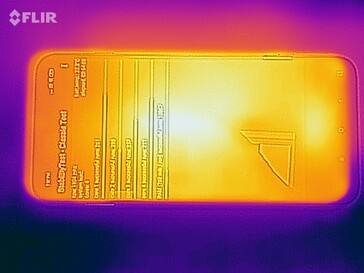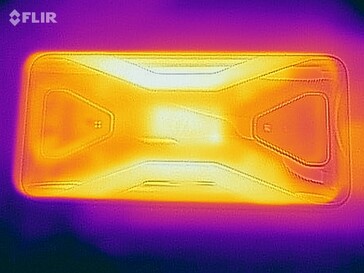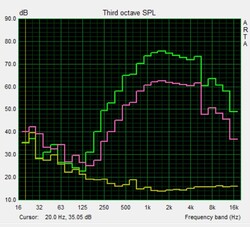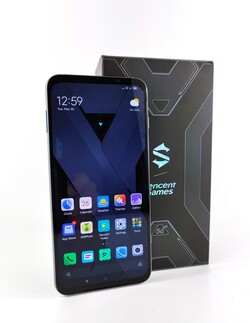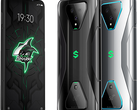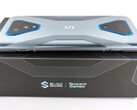Xiaomi Black Shark 3 Pro Smartphone Review - Powerful Gaming Smartphone with a Drawback
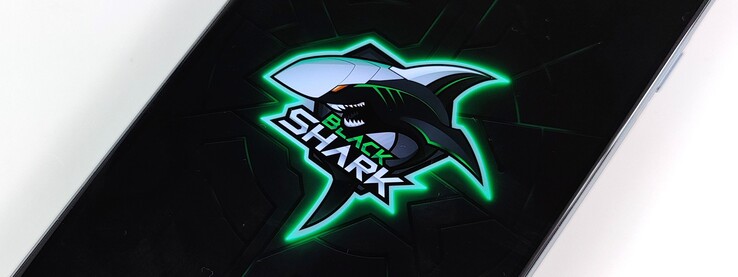
The Black Shark 3 Pro combines high-end specifications including a 7.1-inch OLED panel with a 90 Hz refresh rate and a native resolution of 1440p, stereo speakers and a high-end SoC with the typical gamer smartphone visuals. Xiaomi's gaming subsidiary Black Shark has launched its latest smartphone generation in Europe with 8 GB of RAM and 256 GB of storage. Unlike the "normal" Black Shark 3, which comes at an MSRP of 599 Euros in Europe (~$680), the prices for the Pro version are not yet official. However, a Chinese import version of the Black Shark 3 Pro is already available. Our lender TradingShenzhen demands about 730 Euros (or ~$820) for our test device, which is equipped with 12 GB of RAM and 256 GB of storage space, while a version with 8 GB of RAM is available for around 670 Euros (or ~$760).
Competing Devices
Rating | Date | Model | Weight | Drive | Size | Resolution | Price |
|---|---|---|---|---|---|---|---|
| 85.3 % v7 (old) | 06 / 2020 | Xiaomi Black Shark 3 Pro SD 865, Adreno 650 | 253 g | 256 GB UFS 3.0 Flash | 7.10" | 3120x1440 | |
| 84.2 % v7 (old) | 06 / 2020 | Nubia RedMagic 5G SD 865, Adreno 650 | 218 g | 256 GB UFS 3.0 Flash | 6.65" | 2340x1080 | |
| 88.4 % v7 (old) | 06 / 2020 | OnePlus 8 SD 865, Adreno 650 | 180 g | 256 GB UFS 3.0 Flash | 6.55" | 2400x1080 | |
| 87.8 % v7 (old) | 05 / 2020 | Xiaomi Mi 10 SD 865, Adreno 650 | 208 g | 128 GB UFS 3.0 Flash | 6.67" | 2340x1080 | |
| 84.1 % v7 (old) | 05 / 2020 | Oppo Reno3 Pro 5G SD 765G, Adreno 620 | 171 g | 128 GB UFS 2.1 Flash | 6.50" | 2400x1080 | |
| 82 % v7 (old) | 02 / 2020 | Xiaomi Redmi K30 5G SD 765G, Adreno 620 | 208 g | 128 GB UFS 2.1 Flash | 6.67" | 2400x1080 | |
| 87.2 % v7 (old) | 12 / 2019 | Asus ROG Phone 2 SD 855+, Adreno 640 | 240 g | 512 GB UFS 3.0 Flash | 6.59" | 2340x1080 |
Case - Xiaomi Black Shark 3 Pro with Gamer Elements
You can either like the design language of gaming smartphones or hate it. This statement remains true for the Black Shark 3 Pro as well. While the bezels around the 7.1-inch OLED panel, which consists of scratch-resistant Corning Gorilla Glass, are acceptable, they are fairly large relative to competitors in this price category. As a result, it reaches a screen-to-body ratio of only 83.6%.
The build quality of the case is solid overall. The buttons are integrated firmly into the frame with barely any leeway. Their actuation points are crisp. However, the position of the power button has room for improvement, since it has been placed in such a high place that it is hard to reach, even with larger hands.
Although the Black Shark 3 Pro does not have an IP certification, it comes with nano coating from P2i, which at least protects the Xiaomi phone from splash water. Due to the dimensions and the heavy weight, the Xiaomi smartphone is somewhat unwieldy. Like with most other gaming phones, the Black Shark 3 series' flagship is not a compact smartphone.
Features - Xiaomi Smartphone with UFS 3.0 Storage
Apart from a 3.5 mm headphone jack, connectivity includes the Black Shark logo as status LED, Miracast for wireless video output to external monitors and USB OTG, which allows the smartphone to recognize external storage mediums. Although there is a USB Type-C port, it is only connected to a USB 2.0 interface internally.
Since the Chinese version of the Black Shark 3 Pro only supports Widevine DRM level L3, our test device is unable to stream HD content from Netflix, Amazon Prime Video, or other streaming services. However, the international version of the gaming smartphone should come Widevine L1-certified.
Software - Black Shark 3 Pro with Android 10 and JoyUI 11
The Black Shark 3 Pro comes with Google's latest operating system, Android 10, preinstalled and the manufacturer's own JoyUI on top of it. At the time of writing, the latest security updates date back to March 2020.
JoyUI now features Mi Share, an always-on display and the possibility to output video content to a TV within the same Wi-Fi network. The dedicated gaming software Shark Space 3.0 offers a wide range of gaming customizations and functions as a central hub for controlling accessories.
The international version of the Black Shark 3 Pro has access to familiar Google services, and unlike with the Chinese version users can select system languages other than Chinese or English ex-factory.
The preinstalled software on the Chinese model does not support Google services ex-factory. Instead, Chinese services and Xiaomi's own services act as replacements. However, unlike on Huawei's smartphones, users are not completely cut off from Google's services. That being said, a few things have to be accounted for when manually installing Google's applications. Alternatively, our lender TradingShenzhen offers a Google installer on its homepage. That being said, some apps may still not work after installing the Google Play Store retroactively, since the smartphone has not been officially certified to be compatible with the Play Store.
Communication and GPS - Xiaomi Phone with Wi-Fi 6 and NFC
In terms of the communications modules, Xiaomi uses dual SIM and a Qualcomm SDX55 modem for compatibility with the latest 5G standard and Bluetooth version 5.0. Meanwhile, an NFC chip provides support for Google Pay. The Black Shark 3 Pro supports a total of 15 LTE bands and most of the LTE frequencies relevant to Europe - this includes the LTE band 28, which is becoming more and more important. While buyers of the Chinese version will not be able to utilize band 28, their version will instead support band 20.
Even within the home Wi-Fi, the gaming smartphone has a lot to offer. With the current Wi-Fi standard Wi-Fi 6 and multi-user MIMO, the transfer rates when connected to home networks are fast and consistent. In conjunction with our reference router Netgear Nighthawk AX12, the Black Shark 3 Pro supports transfer rates of above 800 Mb/s, which is a very good result for a smartphone of this price class.
In order to be able to judge the precision of our test device's locating capabilities in practice, we simultaneously record our route with the GPS bike computer Garmin Edge 520. At the end of our test track with a total length of 11.5 kilometers (~7.15 miles), only a distance of 80 meters (~262 feet) separates the smartphone GPS from the professional navigation device. The deviations from the route are small and a look at the detailed course of the GPS recording reveals that the good accuracy of the Black Shark 3 Pro combined with its large display makes it an ideal choice for car navigation. Determining our position via the main satellite systems GPS, GLONASS, BeiDou and QZSS is very quick - even indoors - with an accuracy of within 3 meters.
Telephony and Call Quality - Black Shark 3 with Dual 5G
There are no surprises when it comes to the call quality. Voices can be clearly understood and our conversational partner also characterizes our own voice as distinct-sounding. Thanks to Wi-Fi calling, Wi-Fi networks can be used to make calls in situations where the cell-phone coverage is limited. Additionally, both SIM slots support 5G.
We did not encounter any issues during video calls via Skype with the integrated front camera. The call quality of the integrated microphone is good.
Cameras - Xiaomi Smartphone with a 64 MP Camera
The triple-camera module consists of a 64 MP main camera and an aperture of f/1.8. Xiaomi's gaming-smartphone subsidiary has not provided any further details related to the image sensor, which could be a Samsung GW1 or a Sony IMX 686. Since the latter is also used in Xiaomi's current mid-range offering, it would make sense for Xiaomi to base its Black Shark 3 series on the same sensor. As with the Redmi K30 5G, the Black Shark combines 2x2 adjacent pixels into one larger pixel, resulting in pictures with a resolution of 16 MP.
In daylight, the gaming smartphone takes good pictures with accurate colors. However, the level of detail within the pictures tends to suffer due to the lower degree of sharpness. In darker environments, the pictures suffer from image noise and the sharpness decreases further. Similarly, there is room for improvement in terms of the illumination and exposure.
Video can be recorded at UHD with up to 60 FPS. However, the image stabilization during video recordings is subpar.
The main camera is complemented by an ultra-wide-angle optics with a resolution of 13 MP and an f/2.25 aperture as well as a 5 MP camera for bokeh effects. While the wide-angle optics produces decent results in well-lit environments, compromises have to be made when it comes to the sharpness and details. Infinitely variable zooming between the wide-angle and the main optics is not possible.
In well-lit scenarios, the 20 MP front camera captures beautiful, albeit somewhat overly soft-focused, selfies. However, the degree of sharpness is decent and the exposure does not go overboard even in very bright lighting.
We further analyzed the color accuracy of the Black Shark 3 Pro under controlled lighting conditions. Compared to the reference colors, the colors of the mid-range smartphone are too bright and the pictures of the X-Rite ColorChecker passport show that white tones look significantly warmer than they should.
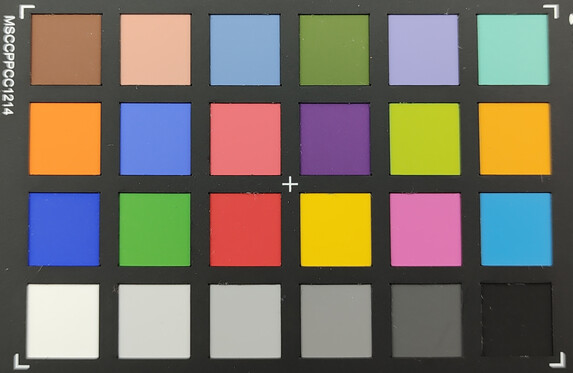
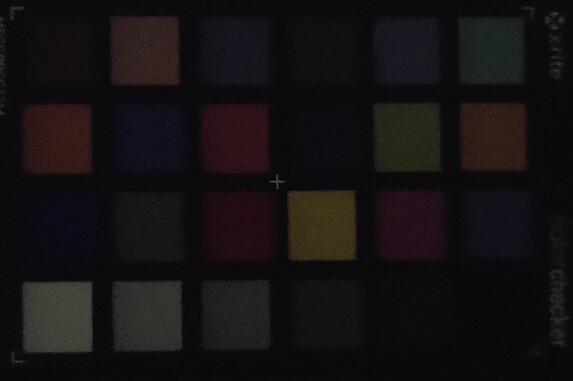
Accessories and Warranty - Gaming Smartphone with Lots of Accessories
Aside from the smartphone itself, the package includes a USB cable, a protective case made of plastic and a modular 65 W charger. Additionally, our lender TradingShenzhen has expanded the scope of delivery with an EU adapter and a USB OTG adapter.
Optionally available extras include various gaming accessories such as a gamepad and a magnetic charging cable. The Black Shark FunCooler Pro combines a 6200 RPM fan with a large aluminum heatsink.
The warranty period of the Xiaomi smartphone is 12 months. Furthermore, TradingShenzhen grants buyers the option of sending the device to a German address in a warranty case. This protects users from having to go through the time-consuming process of shipping the device to China within the first 12 months.
Input Devices & Handling - Black Shark 3 Pro with a 90 Hz Panel and a 270 Hz Sampling Rate
With a touchscreen sampling rate of 270 Hz, the display's refresh rate is not the only one to exceed the 60 Hz mark, which makes the 7.1-inch OLED panel incredibly responsive. Below the display, there is an optical fingerprint sensor and while it responds reliably, it is not one of the fastest of its kind. While users may also use biometric authentication via facial recognition to unlock their Black Shark 3 Pro, this is not the most secure method due to the underlying, 2D-based technology.
Display - Xiaomi Smartphone with an OLED Panel
Similar to Apple's TrueTone technology, the Black Shark 3 Pro's display is able to adjust its color temperature to the ambient lighting. The 7.1-inch AMOLED panel has an aspect ratio of 19.5:9 and a native resolution of 3120x1440 pixels, a pixel density of 484 PPI and a high refresh rate of 90 Hz, resulting in a clear and smooth visual experience.
While the Black Shark 3 Pro's luminosity is good as well, it could be slightly brighter still for outdoor use. When using the auto mode with the ambient light sensor enabled and displaying a purely white image, we measured a peak brightness of 630 cd/m². However, the Black Shark 3 Pro's ambient light sensor tends to respond somewhat sluggishly compared to other smartphones. In the APL50 measurement, which is more indicative of real-world conditions, since it simulates an even distribution of bright and dark areas on the panel, our test device achieved a brightness of 776 cd/m² - a good result.
Although the gaming phone uses PWM to control the brightness, which is common for OLED panels, the frequency is fairly high at 362 Hz. Furthermore, a DC dimming mode is available on the Black Shark 3 Pro.
| |||||||||||||||||||||||||
Brightness Distribution: 90 %
Center on Battery: 293 cd/m²
Contrast: ∞:1 (Black: 0 cd/m²)
ΔE ColorChecker Calman: 4.65 | ∀{0.5-29.43 Ø4.78}
ΔE Greyscale Calman: 4.9 | ∀{0.09-98 Ø5}
99.9% sRGB (Calman 2D)
Gamma: 2.205
CCT: 7500 K
| Xiaomi Black Shark 3 Pro AMOLED, 3120x1440, 7.1" | Nubia RedMagic 5G OLED, 2340x1080, 6.7" | OnePlus 8 AMOLED, 2400x1080, 6.6" | Xiaomi Mi 10 Super AMOLED, 2340x1080, 6.7" | Oppo Reno3 Pro 5G AMOLED, 2400x1080, 6.5" | Xiaomi Redmi K30 5G LCD IPS, 2400x1080, 6.7" | Asus ROG Phone 2 AMOLED, 2340x1080, 6.6" | |
|---|---|---|---|---|---|---|---|
| Screen | -37% | 49% | 48% | 4% | 25% | -5% | |
| Brightness middle (cd/m²) | 570 | 593 4% | 778 36% | 786 38% | 774 36% | 658 15% | 580 2% |
| Brightness (cd/m²) | 589 | 601 2% | 783 33% | 791 34% | 778 32% | 643 9% | 599 2% |
| Brightness Distribution (%) | 90 | 92 2% | 95 6% | 96 7% | 95 6% | 93 3% | 91 1% |
| Black Level * (cd/m²) | 0.49 | ||||||
| Colorchecker dE 2000 * | 4.65 | 8.1 -74% | 0.9 81% | 1.1 76% | 5.28 -14% | 1.8 61% | 4.9 -5% |
| Colorchecker dE 2000 max. * | 7.61 | 16.2 -113% | 2.2 71% | 2.2 71% | 8.55 -12% | 4.4 42% | 9.1 -20% |
| Greyscale dE 2000 * | 4.9 | 7.1 -45% | 1.7 65% | 1.8 63% | 6.2 -27% | 3.8 22% | 5.4 -10% |
| Gamma | 2.205 100% | 2.28 96% | 2.25 98% | 2.26 97% | 2.292 96% | 2.22 99% | 2.17 101% |
| CCT | 7500 87% | 7566 86% | 6481 100% | 6315 103% | 7319 89% | 6255 104% | 7487 87% |
| Contrast (:1) | 1343 |
* ... smaller is better
Screen Flickering / PWM (Pulse-Width Modulation)
| Screen flickering / PWM detected | 362 Hz | ||
The display backlight flickers at 362 Hz (worst case, e.g., utilizing PWM) . The frequency of 362 Hz is relatively high, so most users sensitive to PWM should not notice any flickering. However, there are reports that some users are still sensitive to PWM at 500 Hz and above, so be aware. In comparison: 53 % of all tested devices do not use PWM to dim the display. If PWM was detected, an average of 8108 (minimum: 5 - maximum: 343500) Hz was measured. | |||
Our analysis with a spectrophotometer and the CalMAN software yields average DeltaE values of 4.7 and 4.9 for the colors and grayscale, respectively, which means that the deviations from the sRGB color space are fairly large. However, due to the OLED technology, the black values and as a result, the contrast ratio of the display, are excellent.
Display Response Times
| ↔ Response Time Black to White | ||
|---|---|---|
| 8 ms ... rise ↗ and fall ↘ combined | ↗ 5 ms rise | |
| ↘ 3 ms fall | ||
| The screen shows fast response rates in our tests and should be suited for gaming. In comparison, all tested devices range from 0.1 (minimum) to 240 (maximum) ms. » 21 % of all devices are better. This means that the measured response time is better than the average of all tested devices (20.2 ms). | ||
| ↔ Response Time 50% Grey to 80% Grey | ||
| 10 ms ... rise ↗ and fall ↘ combined | ↗ 5 ms rise | |
| ↘ 5 ms fall | ||
| The screen shows good response rates in our tests, but may be too slow for competitive gamers. In comparison, all tested devices range from 0.165 (minimum) to 636 (maximum) ms. » 22 % of all devices are better. This means that the measured response time is better than the average of all tested devices (31.6 ms). | ||
Outdoors, we achieved good results with the Black Shark 3 Pro's auto mode. Thanks to the high contrast ratio, the display is easy to read and while the screen's content remains discernible even in direct sunlight in the summer, the resulting visual experience is not ideal. When disabling the ambient light sensor, the gaming phone's brightness drops by a noticeable amount (296 cd/m²).
Performance - Black Shark 3 Pro with a Snapdragon 865
The Black Shark 3 Pro is equipped with a Qualcomm Snapdragon 865, which integrates one fast "prime core" with a clock speed of up to 2.84 GHz and three additional Cortex A77-based cores with clock speeds of up to 2.42 GHz. For energy conservation purposes, there are four additional ARM Cortex A55 cores (1.8 GHz). Meanwhile, the powerful Adreno 650 graphics unit within the Qualcomm SoC handles graphics calculations.
The system performance of the JoyUI is exceptional. The user experience is smooth during daily tasks and there are barely any stutters. Thanks to fast UFS storage and the responsive panel, applications start almost instantly.
Combined with 12 GB of LPDDR5 RAM, the Snapdragon 865 within our test device delivers fast performance despite the high-resolution panel, and it even outperforms the Xiaomi Mi 10, which is equipped with a Full HD display with far fewer pixels, in many cases. That being said, the results of the Black Shark 3 Pro fall short of those of 1080p competitors when it comes to purely graphics-dependent onscreen calculations. Although the Xiaomi smartphone reaches above-average results in our web-based benchmarks as well, the 1440p resolution comes at the cost of higher benchmark results. Subjectively, using the Chrome browser is still a very responsive experience and even more-complex web pages load quickly.
| 3DMark | |
| 1280x720 offscreen Ice Storm Unlimited Score (sort by value) | |
| Xiaomi Black Shark 3 Pro | |
| Nubia RedMagic 5G | |
| OnePlus 8 | |
| Xiaomi Mi 10 | |
| Oppo Reno3 Pro 5G | |
| Xiaomi Redmi K30 5G | |
| Asus ROG Phone 2 | |
| Average Qualcomm Snapdragon 865 (56045 - 112989, n=20) | |
| 1280x720 offscreen Ice Storm Unlimited Graphics Score (sort by value) | |
| Xiaomi Black Shark 3 Pro | |
| Nubia RedMagic 5G | |
| OnePlus 8 | |
| Xiaomi Mi 10 | |
| Oppo Reno3 Pro 5G | |
| Xiaomi Redmi K30 5G | |
| Asus ROG Phone 2 | |
| Average Qualcomm Snapdragon 865 (110875 - 180392, n=20) | |
| 1280x720 offscreen Ice Storm Unlimited Physics (sort by value) | |
| Xiaomi Black Shark 3 Pro | |
| Nubia RedMagic 5G | |
| OnePlus 8 | |
| Xiaomi Mi 10 | |
| Oppo Reno3 Pro 5G | |
| Xiaomi Redmi K30 5G | |
| Asus ROG Phone 2 | |
| Average Qualcomm Snapdragon 865 (17817 - 58293, n=20) | |
| AnTuTu v8 - Total Score (sort by value) | |
| Xiaomi Black Shark 3 Pro | |
| Nubia RedMagic 5G | |
| OnePlus 8 | |
| Xiaomi Mi 10 | |
| Xiaomi Redmi K30 5G | |
| Asus ROG Phone 2 | |
| Average Qualcomm Snapdragon 865 (527301 - 631025, n=24) | |
| Jetstream 2 - 2.0 Total Score | |
| Average of class Smartphone (23.8 - 387, n=149, last 2 years) | |
| Asus ROG Phone 2 (Chrome 78) | |
| Average Qualcomm Snapdragon 865 (45.2 - 77, n=20) | |
| Nubia RedMagic 5G (Chrome 83) | |
| Xiaomi Redmi K30 5G (Chrome 80) | |
| Xiaomi Black Shark 3 Pro (Chrome 83) | |
| OnePlus 8 (Chrome 83) | |
| Xiaomi Mi 10 (Xiaomi Browser V11.4.23) | |
| Speedometer 2.0 - Result 2.0 | |
| Average of class Smartphone (15.2 - 643, n=122, last 2 years) | |
| Xiaomi Black Shark 3 Pro (Chrome 83) | |
| Average Qualcomm Snapdragon 865 (30.6 - 74.5, n=19) | |
| Nubia RedMagic 5G (Chrome 83) | |
| Xiaomi Mi 10 (Xiaomi Browser V11.4.23) | |
| Xiaomi Redmi K30 5G (Chrome 80) | |
| OnePlus 8 (Chrome 83) | |
| Asus ROG Phone 2 (Chrome 78) | |
| WebXPRT 3 - Overall | |
| Average of class Smartphone (38 - 380, n=31, last 2 years) | |
| Xiaomi Mi 10 (Xiaomi Browser V11.4.23) | |
| Asus ROG Phone 2 (Chrome 78) | |
| Average Qualcomm Snapdragon 865 (97 - 127, n=23) | |
| Xiaomi Black Shark 3 Pro (Chrome 83) | |
| OnePlus 8 (Chrome 83) | |
| Nubia RedMagic 5G (Chrome 83) | |
| Xiaomi Redmi K30 5G (Chrome 80) | |
| Octane V2 - Total Score | |
| Average of class Smartphone (2228 - 121337, n=197, last 2 years) | |
| Asus ROG Phone 2 | |
| Average Qualcomm Snapdragon 865 (14606 - 31224, n=23) | |
| Xiaomi Mi 10 (Xiaomi Browser V11.4.23) | |
| Nubia RedMagic 5G (Chrome 83) | |
| Xiaomi Black Shark 3 Pro (Chrome 83) | |
| Xiaomi Redmi K30 5G (Chrome 80) | |
| OnePlus 8 (Chrome 83) | |
| Mozilla Kraken 1.1 - Total | |
| Xiaomi Redmi K30 5G (Chrome 80) | |
| OnePlus 8 (Chrome 83) | |
| Nubia RedMagic 5G (Chrome 83) | |
| Xiaomi Mi 10 (Xiaomi Browser V11.4.23) | |
| Xiaomi Black Shark 3 Pro (Chrome 83) | |
| Average Qualcomm Snapdragon 865 (1623 - 2911, n=24) | |
| Asus ROG Phone 2 (Chrome 78) | |
| Average of class Smartphone (257 - 28190, n=153, last 2 years) | |
* ... smaller is better
| Xiaomi Black Shark 3 Pro | Nubia RedMagic 5G | OnePlus 8 | Xiaomi Mi 10 | Oppo Reno3 Pro 5G | Xiaomi Redmi K30 5G | Asus ROG Phone 2 | Average 256 GB UFS 3.0 Flash | Average of class Smartphone | |
|---|---|---|---|---|---|---|---|---|---|
| AndroBench 3-5 | -14% | 3% | -3% | -33% | -51% | -24% | -9% | 76% | |
| Sequential Read 256KB (MB/s) | 1398 | 1654 18% | 1707 22% | 1498 7% | 961 -31% | 890 -36% | 1487 6% | 1547 ? 11% | 2217 ? 59% |
| Sequential Write 256KB (MB/s) | 658 | 388.4 -41% | 748 14% | 680 3% | 476.3 -28% | 312.8 -52% | 386.4 -41% | 575 ? -13% | 1840 ? 180% |
| Random Read 4KB (MB/s) | 218.2 | 201.6 -8% | 215 -1% | 207 -5% | 159.1 -27% | 96.8 -56% | 165.9 -24% | 210 ? -4% | 294 ? 35% |
| Random Write 4KB (MB/s) | 261.5 | 193.6 -26% | 203.9 -22% | 215.9 -17% | 145 -45% | 101 -61% | 165.3 -37% | 188.5 ? -28% | 334 ? 28% |
Gaming - Gaming Phone with an Adreno 650 GPU
The integrated gyroscope and touchscreen controls of the Black Shark 3 Pro work reliably and accurately while gaming. Aside from the usual smartphone buttons, there is a button for the gaming hub and the "Master Triggers", which are two dedicated, retractable shoulder buttons. Although the shoulder buttons can be reassigned to other actions, they are significantly looser than the other buttons.
The graphics performance of the Adreno 650 is sufficient enough to display even more-demanding games such as PUBG mobile smoothly at the highest quality settings. However, we were unable to take advantage of the full 90 Hz of the OLED panel in the titles we tested, even though some of the titles theoretically support higher refresh rates - Black Shark seems to have limited the frame rate to 60 FPS, which is a particularly odd choice for a gaming smartphone. The slightly older shooter Dead Trigger 2 can only be played at 60 FPS at high graphics settings, while Asphalt 9 Legends is currently stuck at the 30 FPS mark. We used Gamebench to record the frame rates.
PUBG Mobile
Asphalt 9 Legends
Dead Trigger 2
Emissions - Black Shark 3 Pro with Stereo Speakers
Temperature
Excessive heat development under load can adversely affect the gaming experience. We used the battery test of the GFXBench app to monitor the performance level of the Black Shark 3 when stressed for extended periods. As the Manhattan 3.1 test shows, the frame rate barely drops as the system load increases. The fluctuations are within 5%. Thus, performance drops during prolonged gaming sessions are unlikely thanks to the effective sandwich-style liquid cooling system.
(±) The maximum temperature on the upper side is 40.2 °C / 104 F, compared to the average of 35.2 °C / 95 F, ranging from 21.9 to 247 °C for the class Smartphone.
(+) The bottom heats up to a maximum of 39.9 °C / 104 F, compared to the average of 34 °C / 93 F
(+) In idle usage, the average temperature for the upper side is 27.6 °C / 82 F, compared to the device average of 32.9 °C / 91 F.
Speakers
In our tests, the stereo speakers, which face the user, achieve a satisfactory maximum volume level of 84 dB(A). The audio is defined by mids that sound fairly unbalanced.
For better audio output, buyers may use the 3.5 mm headphone jack, which offers good sound and a solid maximum volume level. Thanks to support for the Bluetooth codecs aptX and aptX HD as well as LDAC, nothing stands in the way of wireless solutions, either.
Xiaomi Black Shark 3 Pro audio analysis
(+) | speakers can play relatively loud (84.3 dB)
Bass 100 - 315 Hz
(-) | nearly no bass - on average 70% lower than median
(+) | bass is linear (0% delta to prev. frequency)
Mids 400 - 2000 Hz
(-) | nearly no mids - on average 70% lower than median
(+) | mids are linear (0% delta to prev. frequency)
Highs 2 - 16 kHz
(-) | nearly no highs - on average 70% lower than median
(+) | highs are linear (0% delta to prev. frequency)
Overall 100 - 16.000 Hz
(-) | overall sound is not linear (117.6% difference to median)
Compared to same class
» 87% of all tested devices in this class were better, 7% similar, 5% worse
» The best had a delta of 11%, average was 35%, worst was 134%
Compared to all devices tested
» 96% of all tested devices were better, 2% similar, 2% worse
» The best had a delta of 4%, average was 24%, worst was 134%
Xiaomi Mi 10 audio analysis
(+) | speakers can play relatively loud (83.5 dB)
Bass 100 - 315 Hz
(-) | nearly no bass - on average 23.2% lower than median
(±) | linearity of bass is average (11.3% delta to prev. frequency)
Mids 400 - 2000 Hz
(+) | balanced mids - only 3.5% away from median
(+) | mids are linear (4.4% delta to prev. frequency)
Highs 2 - 16 kHz
(±) | higher highs - on average 5.2% higher than median
(+) | highs are linear (2.8% delta to prev. frequency)
Overall 100 - 16.000 Hz
(±) | linearity of overall sound is average (19.8% difference to median)
Compared to same class
» 31% of all tested devices in this class were better, 8% similar, 61% worse
» The best had a delta of 11%, average was 35%, worst was 134%
Compared to all devices tested
» 50% of all tested devices were better, 7% similar, 43% worse
» The best had a delta of 4%, average was 24%, worst was 134%
Energy Management - Xiaomi Smartphone with 65 W Fast Charging
Energy Consumption
The Xiaomi smartphone is equipped with a large 5000 mAh battery (2x2500 mAh) that can be fully recharged via the USB Type-C port within less than 45 minutes thanks to Qualcomm's quick charge 4.0+ 65 W technology. Additionally, four magnetic connectors on the back of the Black Shark 3 Pro offer an alternative charging method that requires an optional charging cable and limits the charge rate to 18 watts.
| Off / Standby | |
| Idle | |
| Load |
|
Key:
min: | |
| Xiaomi Black Shark 3 Pro 5000 mAh | OnePlus 8 4300 mAh | Xiaomi Mi 10 4780 mAh | Oppo Reno3 Pro 5G 4025 mAh | Xiaomi Redmi K30 5G 4500 mAh | Asus ROG Phone 2 6000 mAh | Nubia RedMagic 5G 4500 mAh | Average Qualcomm Snapdragon 865 | Average of class Smartphone | |
|---|---|---|---|---|---|---|---|---|---|
| Power Consumption | 31% | 46% | 24% | 49% | 31% | 20% | 28% | ||
| Idle Minimum * (Watt) | 1.5 | 0.9 40% | 0.53 65% | 0.66 56% | 0.68 55% | 1.1 27% | 1.133 ? 24% | 0.842 ? 44% | |
| Idle Average * (Watt) | 2.3 | 2.3 -0% | 1.46 37% | 2.37 -3% | 1.05 54% | 1.5 35% | 2.23 ? 3% | 1.439 ? 37% | |
| Idle Maximum * (Watt) | 3.1 | 2.33 25% | 1.52 51% | 2.42 22% | 1.07 65% | 1.71 45% | 2.45 ? 21% | 1.624 ? 48% | |
| Load Average * (Watt) | 7.4 | 3.5 53% | 3.83 48% | 6.8 8% | 4.14 44% | 4.84 35% | 5.26 ? 29% | 7.03 ? 5% | |
| Load Maximum * (Watt) | 12.3 | 7.68 38% | 8.89 28% | 7.5 39% | 9.05 26% | 10.42 15% | 9.68 ? 21% | 11.3 ? 8% |
* ... smaller is better
Battery Life
The runtimes are generally good. In spite of the huge 1440p panel, the lithium-polymer battery lasts almost 13 hours in our Wi-Fi test, which we performed at a display brightness of 150 cd/m². Even under continuous load, the energy reserves of the Black Shark 3 Pro last for more than 4 hours at maximum brightness. Thus, long gaming sessions are no problem for this particular gaming smartphone.
| Xiaomi Black Shark 3 Pro 5000 mAh | OnePlus 8 4300 mAh | Xiaomi Mi 10 4780 mAh | Oppo Reno3 Pro 5G 4025 mAh | Xiaomi Redmi K30 5G 4500 mAh | Asus ROG Phone 2 6000 mAh | Nubia RedMagic 5G 4500 mAh | |
|---|---|---|---|---|---|---|---|
| Battery runtime | 1% | 2% | 14% | 3% | 11% | -30% | |
| Reader / Idle (h) | 26.5 | 22.9 -14% | 29.8 12% | 34.7 31% | |||
| H.264 (h) | 16.2 | 18.3 13% | 18.8 16% | 12.2 -25% | |||
| WiFi v1.3 (h) | 12.8 | 17.4 36% | 11 -14% | 14.6 14% | 13.4 5% | 14.2 11% | 10.2 -20% |
| Load (h) | 4.1 | 2.8 -32% | 3.8 -7% | 4.1 0% | 2.5 -39% |
Pros
Cons
Verdict - Big, Bigger, Black Shark 3 Pro
The Black Shark 3 Pro offers excellent gaming hardware for mobile gaming enthusiasts. The enormous OLED panel features both a high refresh rate and a high sampling rate. Despite the 1440p resolution, the performance of the gaming smartphone is outstanding, the runtimes are decent and the heat development barely affects the available performance - even without the optional accessory "FunCooler Pro". Dedicated shoulder buttons and stereo speakers add to the overall gaming experience, although the speakers are lacking in terms of quality compared to those of the Xiaomi Mi 10.
Aside from smaller complaints, which relate to the dim display in manual mode without the ambient light sensor, somewhat loose Master Trigger buttons as well as a lack of storage expansion options, one issue is particularly irritating on a smartphone intended for gaming: The software restrictions from the Chinese manufacturer. They limit the OLED panel to below the full 90 Hz refresh rate in our test games, even though PUBG mobile and Dead Trigger 2 both theoretically support 120 FPS - here, Black Shark appears to have implemented a 60-FPS limit. The fact that the Redmi K30 5G reaches the full 120 FPS in our test exacerbates this frustration. We hope that Black Shark will fix this as soon as possible.
The Black Shark 3 Pro is a gamer's delight.
For those who consider the 7.1-inch display to be too large, the "normal" Black Shark 3, which is already available in Europe with 8 GB of RAM and 128 GB of storage, is an interesting alternative.
Xiaomi Black Shark 3 Pro
- 08/31/2022 v7 (old)
Marcus Herbrich




